kare-kare ( oxtail with peanut butter)

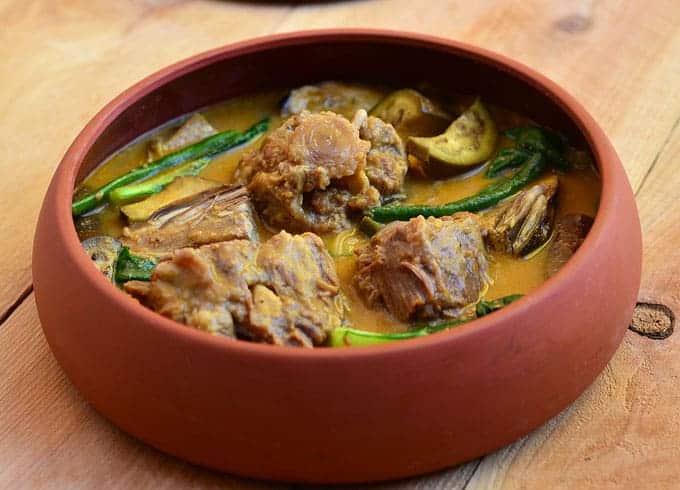

 &w=840&h=630" alt="Vancouver food blogger creates cookbook celebrating Filipino food | Goderich Signal Star" data-noaft="1" />
&w=840&h=630" alt="Vancouver food blogger creates cookbook celebrating Filipino food | Goderich Signal Star" data-noaft="1" />

kare-kare ( oxtail with peanut butter)



 &w=840&h=630" alt="Vancouver food blogger creates cookbook celebrating Filipino food | Goderich Signal Star" data-noaft="1" />
&w=840&h=630" alt="Vancouver food blogger creates cookbook celebrating Filipino food | Goderich Signal Star" data-noaft="1" />


@rambo
Oxtail kare-kare is delicious. If the restaurant doesn't have it available, I'll still order the regular beef kare-kare.
Sinigang soup
Sinigang means "stewed [dish]", it is a nominalized form of the Tagalog verb sigang, "to stew".[1] While present nationwide, sinigang is seen to be culturally Tagalog in origin, thus the similar sour stews and soups found in the Visayas and Mindanao (like linarang) are regarded as different dishes and differ in the ingredients used. Fish sauce is a common condiment for the stew. The Malaysian dish singgang is derived from sinigang.[2]

Sinigang is most often associated with tamarind in modern times, but it originally referred to any meat or seafood cooked in a sour and acidic broth, similar to but differentiated from paksiw (which uses vinegar).[2] Other variations of the dish derive their sourness from native ingredients. These souring agents include unripe mangoes, butterfly tree leaves (alibangbang), citruses (including the native calamansi and biasong), santol, bilimbi (kamias or iba), gooseberry tree fruits (karmay), binukaw fruits (also batuan), and libas fruits, among others.[3][4] Guava, introduced to the Philippines via the Manila galleons is also used.[5] Seasoning powder or bouillon cubes with a tamarind base are commercial alternatives to using natural fruits.[6][7]
Sinigang typically use meat or seafood (e.g., fish, pork, beef, shrimp, or chicken) stewed with tamarind, tomatoes, garlic, and onions. Other vegetables commonly used in the making of sinigang include okra, taro corms (gabi), white radish (labanós), water spinach (kangkóng), yardlong beans (sitaw) and eggplant (talóng). Most Filipinos like to cook sinigang with green long peppers in order to enhance the taste and add a little spice to the dish. Another variation includes adding locally made miso.




@rambo
You can pretty much make sinigang with any meat like you said. We make sinigang with beef ribs. The rib bones impart a lot nutrients and taste into the soup. The most common sinigang version that I'm familiar with is with bangus (milkfish) and it's sometimes combined with shrimps. Another version of sinigang is bangus heads. In sinigang bangus, the bangus is cut into parts. Sometimes the head is included, but sometimes it's removed. The head imparts a lot of taste and nutrients into the soup that many do like. I've seen it several times where people just cook with the bangus heads and don't bother adding the rest of the fish. The head has some meat that can be eaten, but the eyes are also edible. The same is true with the shrimps. Some remove the head, but many keep it on as it imparts taste and possibly nutrients into the soup. Some Filipinos abroad even sinigang with salmon. Salmon is not found in the Philippines, but salmon seems to work well. I've seen it where they just use the salmon's head also, and again for the same reasons above. Many non-Filipinos are adverse to having the head of a fish (or any animal) in a dish (especially a soup dish) much less eating it, but Filipino cuisine doesn't shy away from it, and it utilizes all parts of an animal either for consumption or flavoring. Filipino cuisine isn't necessarily unique in this way as many other cultures around the world also make use of every part of the animal in order to take advantage of its nutritional or taste benefits and to avoid waste.
Vegetable lumpia sariwa
Lumpia are various types of spring rolls commonly found in Indonesia[1] and the Philippines.[2] Lumpia are made of thin paper-like or crepe-like pastry skin called "lumpia wrapper" enveloping savory or sweet fillings.[3] It is often served as an appetizer or snack, and might be served deep fried or fresh (unfried). Lumpia are Indonesian and Filipino adaptations of the Fujianese and Teochew popiah, which was created during the 17th century in the former.[4][5]
In Indonesia lumpia has become a favorite snack,[6] and is known as a street hawker food in the country.[7] In the Philippines, lumpia is one of the most common dishes served in gatherings and celebration.[8]
In the Netherlands and Belgium, it is spelled loempia, the old Indonesian spelling, which has also become the generic name for "spring roll" in Dutch.[6] A variant is the Vietnamese lumpia, wrapped in a thinner pastry, though still close in size to a spring roll, in which the wrapping closes the ends off completely, which is typical for lumpia.





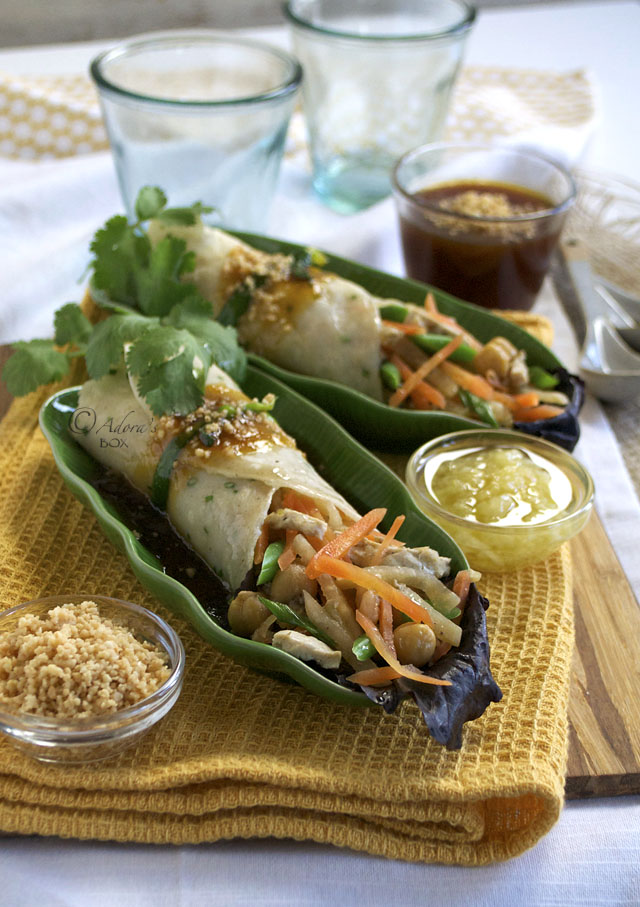
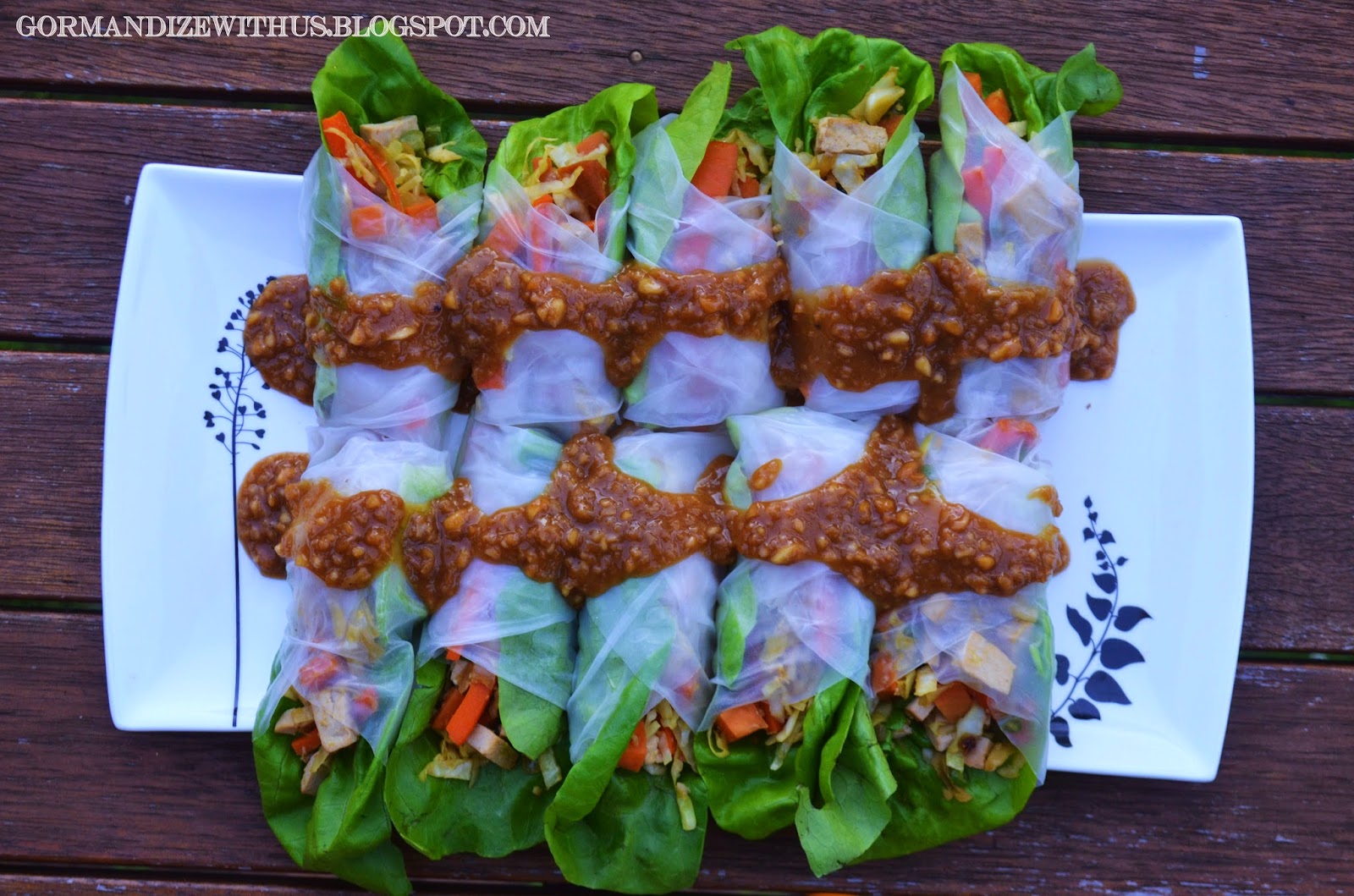

Lumpia
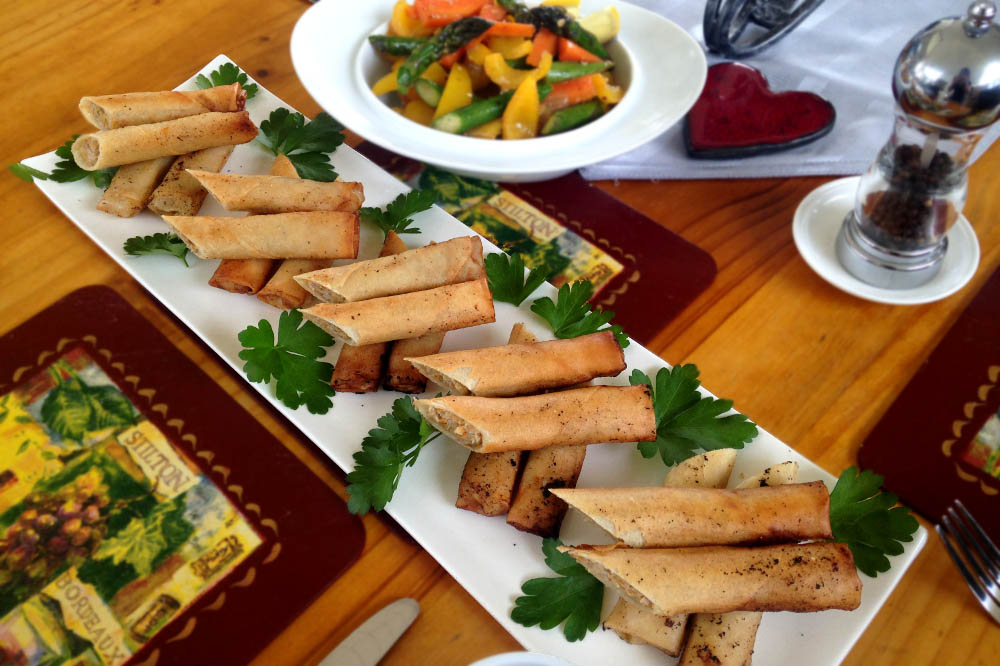
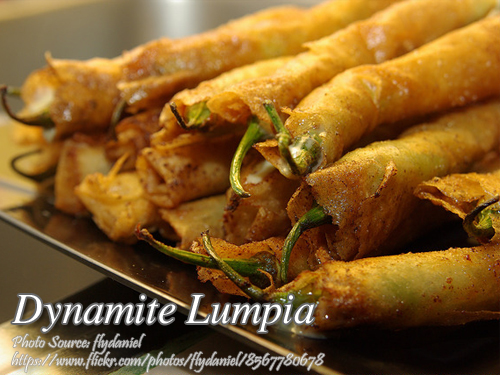




I tried lumpia... and it was pretty good. I should try other Filipino dishes. The pictures of the food on this forum look delicious.